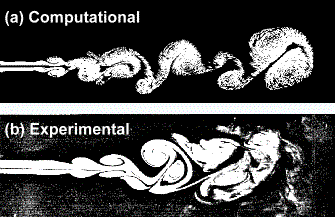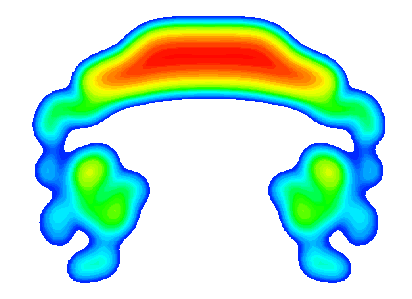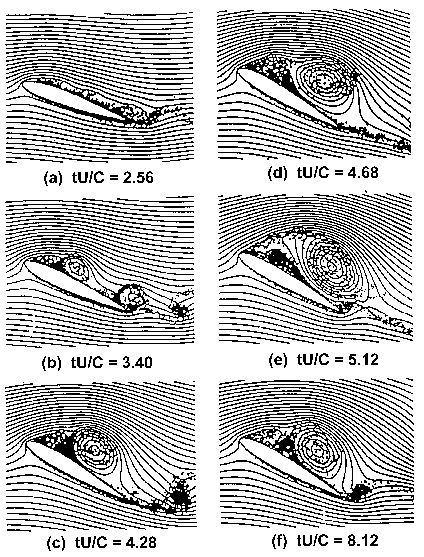CFD using the MARS Numerical Code
MARS (Mixing and Reaction Simulation) is a numerical code under development at BlazeTech based on the Lagrangian Vortex Element Method. This scheme uses the Navier-Stokes equations for incompressible viscous flow formulated in terms of velocity and vorticity variables. The flow field (vorticity field) is represented by a number of Lagrangian vortex elements. Each element is characterized by a position vector, a strength vector, and a radius. The fluid velocity at any location can be decomposed into two components: vortical and potential. The vortical component of the velocity is calculated by the superposition of the induced velocity from all the vortex elements using the Biot-Savart law. The potential velocity component can be obtained by solving the Laplace equation subjected to zero normal flow at any boundary surface. The viscous diffusion is included by the Random Walk Technique, with a velocity related to molecular viscosity and local subscale viscosity. No slip boundary conditions are satisfied by generating vortex sheets at the solid boundaries. The boundary condition at infinity is satisfied automatically.
Among its many advantages, this methodology is grid free and well suitable for transient problems. It is superior to existing Euler techniques for unsteady, high Reynolds number flows where it has an inherent ability to sense the onset of an eruptive event and respond quickly to concentrate computational resources (elements) into the erupting region.
Previous work has included the solution of unsteady, two dimensional, turbulent flow such as free jets, the rise of a hot, buoyant cloud in the atmosphere, and flow over a pitching and impulsively started airfoil. Two-dimensional solutions can be obtained on a Pentium PC.

A snapshot of a starting, two-dimensional jet with a Reynolds number = 1500.
(a) BlazeTech computational results using vortex method and fast summation method,
(b) experimental measurements courtesy of S.Gogineni and C. Shih, FAMU/FSU College of Engineering.

BlazeTech computational results of a hot, rising puff exhibiting the well-known mushroom shape.

Computational results courtesy of Szu-Chuan Wang using the Vortex Method for an impulsively started NACA 0012 airfoil at attack angle = 30° and Re = 5000 for various times (time step = 0.04).
Practical potential applications include aircraft noise prediction and control, simulation of coal combustion systems, aerodynamic analysis of airfoil geometry in unsteady flow, prediction of surface pressure fluctuations in turbulent flows, and many other unsteady, turbulent flow applications.
Current and future work involves the extension of MARS to three dimensions, adding compressibility effects, and modifying the conventional, direct computation of N-body interactions (operations proportional to O(N2)) with a fast summation scheme which reduces operations to O(N·logN).
